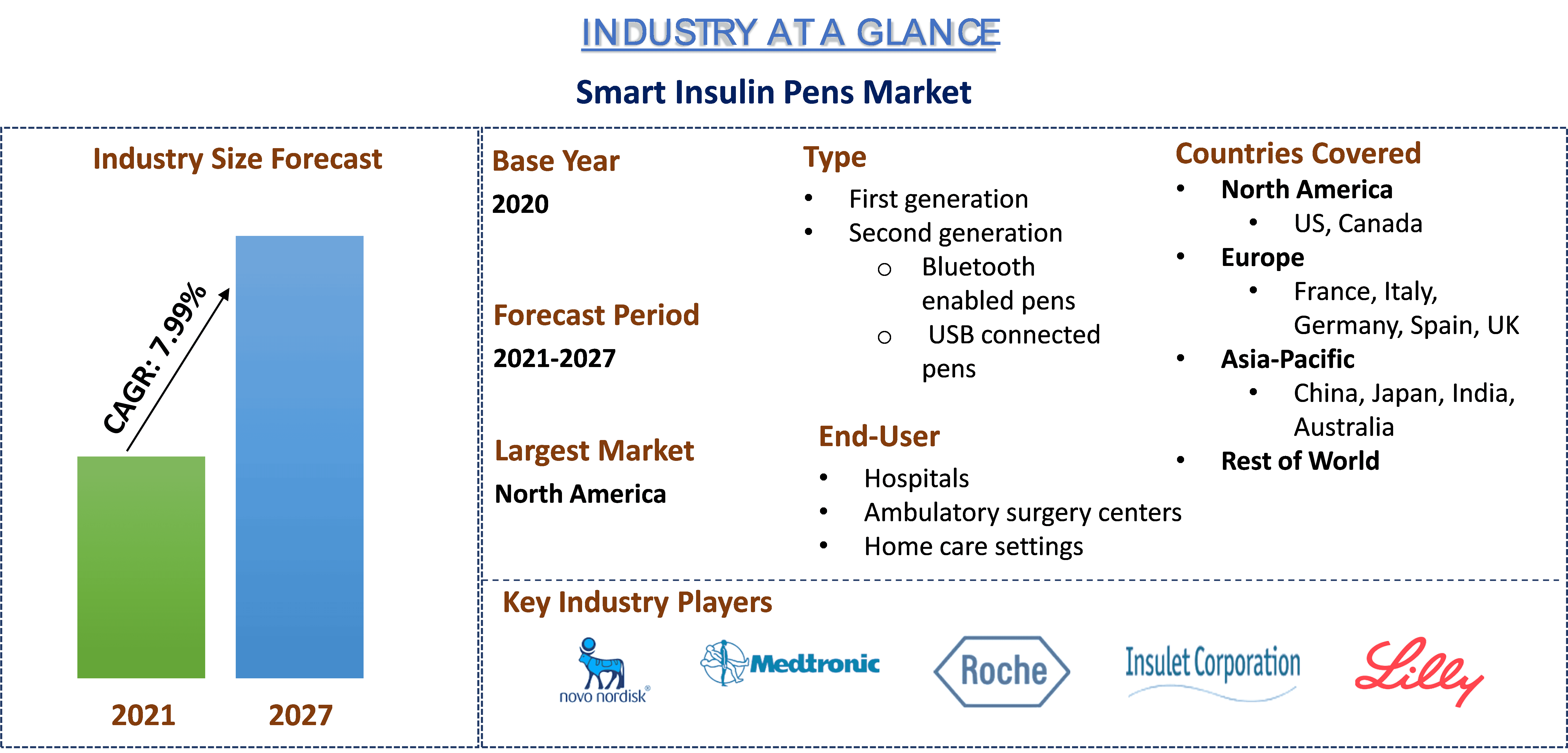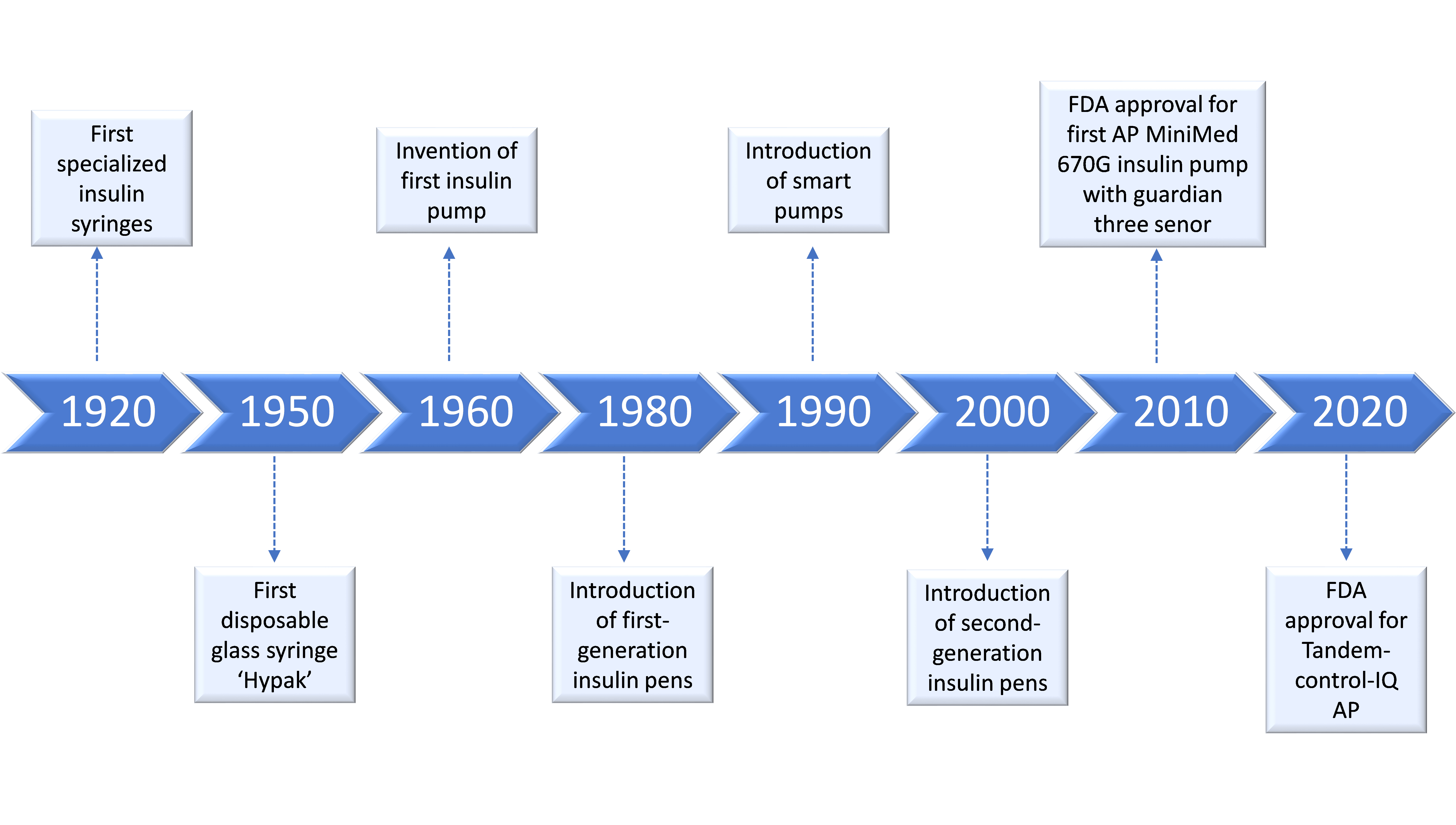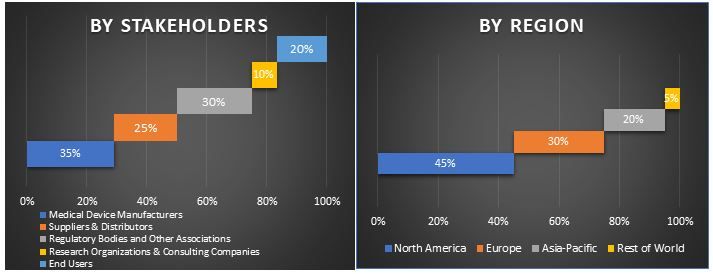- Home
- Chi siamo
- Settore
- Servizi
- Lettura
- Contattaci
Mercato delle penne intelligenti per insulina: analisi attuale e previsioni (2021-2027)
Enfasi su Tipo (Prima Generazione, Seconda Generazione), Usabilità (Pre-Compilato, Riutilizzabile); Utente Finale (Ospedali, Centri di Chirurgia Ambulatoriale, Ambienti di Assistenza Domiciliare); e Regione e Paese.

Le penne per insulina intelligenti sono impiegate per la somministrazione esterna di insulina, fornendo una comoda opzione per il trattamento del diabete. Le penne per insulina stanno osservando una significativa crescita della domanda negli ultimi anni, a causa di un aumento del numero di pazienti diabetici, nonché della loro efficacia in termini di costi rispetto ai microinfusori per insulina. Nel 2019 il diabete ha colpito 463 milioni di persone in tutto il mondo, pari al 9,3% della popolazione adulta globale (20-79 anni). Nel 2030, si prevede che questo numero salirà a 578 milioni (10,2%) e a 700 milioni (10,9%) nel 2045. Nel 2019, la prevalenza del diabete dovrebbe essere del 9,0% nelle donne e del 9,6% negli uomini. La prevalenza del diabete aumenta con l'età, con una prevalenza del 19,9% (111,2 milioni) negli adulti di età compresa tra 65 e 79 anni. Le penne per insulina intelligenti hanno vari vantaggi rispetto ad altri dispositivi di somministrazione di insulina, tra cui la facilità d'uso rispetto a una siringa e la portabilità che ne consente l'uso fuori casa.
Nel Sud-Est asiatico, quasi 600.000 persone sono morte prima dei 60 anni a causa del diabete nel 2019, mentre il Pacifico occidentale ha registrato circa 480.000 decessi correlati al diabete. Queste regioni hanno anche il più alto numero di persone di età compresa tra i 20 e i 79 anni che hanno il diabete non diagnosticato: la regione del Pacifico occidentale aveva quasi 91 milioni di casi di diabete non diagnosticato nel 2019, mentre circa 50 milioni di abitanti del Sud-Est asiatico avevano il diabete non diagnosticato. Queste ragioni hanno causato un aumento della consapevolezza tra gli individui e si prevede che guideranno la crescita del mercato. Inoltre, l'aumento della spesa sanitaria pro capite ha avuto un impatto positivo sulla vendita di microinfusori per insulina. Ad esempio, secondo i dati OCSE del 2019, gli Stati Uniti hanno registrato il PIL pro capite più alto al 17%, seguiti da Svizzera e Germania rispettivamente al 12,1% e all'11,7%. Si prevede che il mercato delle penne per insulina intelligenti crescerà grazie ai miglioramenti nell'assistenza sanitaria.
Eventi principali nella storia dei dispositivi di somministrazione di insulina

Eli Lilly and Company, Novo Nordisk, DIAMESCO, Emperra GmbH, Ypsomed holding AG, F. Hoffmann-La Roche AG, Insulet Corporation, Jiangsu Delfu medical device Co. e Medtronics sono alcuni dei principali attori che operano nel mercato globale delle penne per insulina intelligenti. Diversi M&A insieme a partnership sono stati intrapresi da questi attori per facilitare i clienti con prodotti hi-tech e innovativi.
Approfondimenti presentati nel rapporto
"Tra i tipi, il segmento della seconda generazione detiene la quota maggiore"
 Sulla base del tipo di terapia, il mercato è frammentato in prima e seconda generazione. Il segmento della seconda generazione, a causa dell'aumento della popolazione geriatrica e dell'aumento dell'auto-somministrazione tra i pazienti, ha dominato il mercato con una quota del XX% nel 2020 e si prevede che manterrà il suo dominio durante il periodo di previsione grazie alla sua facile portabilità e connettività wireless.
Sulla base del tipo di terapia, il mercato è frammentato in prima e seconda generazione. Il segmento della seconda generazione, a causa dell'aumento della popolazione geriatrica e dell'aumento dell'auto-somministrazione tra i pazienti, ha dominato il mercato con una quota del XX% nel 2020 e si prevede che manterrà il suo dominio durante il periodo di previsione grazie alla sua facile portabilità e connettività wireless.
"Tra Usabilità, si prevede che il pre-riempito crescerà al CAGR più alto durante il periodo analizzato"
Sulla base dell'usabilità, il mercato è frammentato in Pre-riempito e Riutilizzabile. Nel 2020, le impostazioni di assistenza domiciliare hanno rappresentato una quota massima di entrate di mercato del XX% e si prevede che rimarranno dominanti durante il periodo analizzato.
Tra End-User, il segmento Homecare Setting detiene la quota maggiore"
Sulla base dell'utente finale, il mercato è frammentato in ospedali, centri chirurgici ambulatoriali e contesti di assistenza domiciliare. Nel 2020, le impostazioni di assistenza domiciliare hanno rappresentato una quota massima di entrate di mercato del XX% e si prevede che rimarranno dominanti durante il periodo analizzato.
"Il Nord America rappresenta uno dei maggiori mercati del mercato delle penne per insulina intelligenti"
Per una migliore comprensione delle dinamiche di mercato del mercato delle penne per insulina intelligenti, è stata condotta un'analisi dettagliata per diverse regioni in tutto il mondo, tra cui Nord America (Stati Uniti, Canada e il resto del Nord America), Europa (Germania, Francia, Italia, Spagna, Regno Unito e resto d'Europa), Asia-Pacifico (Cina, Giappone, India e resto dell'APAC), Resto del mondo. Il Nord America ha dominato il mercato e ha generato entrate per USD XX milioni nel 2020. La regione del Nord America e dei Caraibi ha speso circa 325 miliardi di dollari USA per l'assistenza sanitaria per le persone con diabete nel 2019. Tuttavia, la regione Asia-Pacifico crescerà al CAGR più alto durante il periodo di previsione a causa della sua elevata base di popolazione e dell'aumento dell'incidenza di pazienti diabetici.
Motivi per acquistare questo rapporto:
- Lo studio include analisi di dimensionamento e previsione del mercato convalidate da esperti chiave del settore autenticati
- Il rapporto presenta una rapida panoramica delle prestazioni complessive del settore a colpo d'occhio
- Il rapporto copre un'analisi approfondita dei principali colleghi del settore con un focus primario sulle principali finanze aziendali, sul portafoglio prodotti, sulle strategie di espansione e sugli sviluppi recenti
- Esame dettagliato di driver, vincoli, tendenze chiave e opportunità prevalenti nel settore
- Lo studio copre in modo completo il mercato attraverso diversi segmenti
- Analisi approfondita a livello regionale del settore
Opzioni di personalizzazione:
Il mercato delle penne per insulina intelligenti può essere ulteriormente personalizzato in base alle esigenze o a qualsiasi altro segmento di mercato. Inoltre, UMI comprende che potresti avere le tue esigenze aziendali, quindi sentiti libero di metterti in contatto con noi per ottenere un rapporto che si adatti completamente alle tue esigenze.
Indice
L'analisi del mercato storico, la stima del mercato attuale e la previsione del mercato futuro del mercato globale delle penne per insulina intelligenti sono stati i tre passaggi principali intrapresi per creare e analizzare l'adozione di penne per insulina per le diverse malattie nelle principali regioni a livello globale. È stata condotta un'esaustiva ricerca secondaria per raccogliere i numeri del mercato storico e stimare le dimensioni attuali del mercato. In secondo luogo, per convalidare queste informazioni, sono stati presi in considerazione numerosi risultati e ipotesi. Inoltre, sono state condotte anche interviste primarie approfondite con esperti del settore in tutta la catena del valore del settore delle penne per insulina intelligenti. Dopo l'assunzione e la convalida dei numeri di mercato attraverso interviste primarie, abbiamo impiegato un approccio top-down/bottom-up per prevedere le dimensioni complete del mercato. Successivamente, sono stati adottati metodi di scomposizione del mercato e di triangolazione dei dati per stimare e analizzare le dimensioni del mercato dei segmenti e dei sottosegmenti a cui appartiene il settore. La metodologia dettagliata è spiegata di seguito:
Analisi delle dimensioni storiche del mercato
Fase 1: Studio approfondito delle fonti secondarie:
È stato condotto uno studio secondario dettagliato per ottenere le dimensioni storiche del mercato delle penne per insulina intelligenti attraverso fonti interne dell'azienda come relazione annuale e bilanci, presentazioni sulle prestazioni, comunicati stampa, ecc., e fonti esterne tra cui riviste, notizie e articoli, pubblicazioni governative, pubblicazioni della concorrenza, rapporti di settore, database di terze parti e altre pubblicazioni credibili.
Fase 2: Segmentazione del mercato:
Dopo aver ottenuto le dimensioni storiche del mercato delle penne per insulina intelligenti, abbiamo condotto un'analisi secondaria dettagliata per raccogliere informazioni sul mercato storico e quote per diversi segmenti per le principali regioni. I principali segmenti inclusi nel rapporto sono tipo, utente finale e canale di distribuzione. Sono state condotte ulteriori analisi a livello di paese per valutare l'adozione complessiva delle penne per insulina intelligenti in ogni regione.
Fase 3: Analisi dei fattori:
Dopo aver acquisito le dimensioni storiche del mercato di diversi segmenti e sottosegmenti, abbiamo condotto un'analisi dei fattori dettagliata per stimare le dimensioni attuali del mercato delle penne per insulina intelligenti. Inoltre, abbiamo condotto un'analisi dei fattori utilizzando variabili dipendenti e indipendenti come l'aumento dell'incidenza del cancro e la crescita della popolazione geriatrica. È stata condotta un'analisi approfondita per lo scenario della domanda e dell'offerta considerando le principali partnership, fusioni e acquisizioni, espansione aziendale e lancio di prodotti nel settore delle penne per insulina intelligenti in tutto il mondo.
Stima e previsione delle dimensioni attuali del mercato
Dimensionamento attuale del mercato: Sulla base di informazioni utili derivanti dai 3 passaggi precedenti, siamo giunti alle dimensioni attuali del mercato, ai principali operatori nel mercato delle penne per inulina intelligenti e alle quote di mercato dei segmenti. Tutte le quote percentuali richieste e le ripartizioni del mercato sono state determinate utilizzando l'approccio secondario sopra menzionato e sono state verificate tramite interviste primarie.
Stima e previsione: Per la stima e la previsione del mercato, sono stati assegnati pesi a diversi fattori tra cui driver e tendenze, vincoli e opportunità disponibili per le parti interessate. Dopo aver analizzato questi fattori, sono state applicate tecniche di previsione pertinenti, ovvero l'approccio top-down/bottom-up, per arrivare alla previsione di mercato intorno al 2027 per diversi segmenti e sottosegmenti nei principali mercati a livello globale. La metodologia di ricerca adottata per stimare le dimensioni del mercato comprende:
- Le dimensioni del mercato del settore, in termini di valore (USD) e il tasso di adozione delle penne per insulina intelligenti nei principali mercati nazionali
- Tutte le quote percentuali, le divisioni e le ripartizioni dei segmenti e dei sottosegmenti di mercato
- Principali operatori nel mercato delle penne per insulina intelligenti in termini di servizi offerti. Inoltre, le strategie di crescita adottate da questi operatori per competere nel mercato in rapida crescita
Convalida delle dimensioni e della quota di mercato
Ricerca primaria: Sono state condotte interviste approfondite con i Key Opinion Leader (KOL) tra cui dirigenti di alto livello (CXO/VP, responsabile delle vendite, responsabile del marketing, responsabile operativo e responsabile regionale, responsabile nazionale, ecc.) nelle principali regioni. I risultati della ricerca primaria sono stati quindi riassunti e sono state eseguite analisi statistiche per dimostrare l'ipotesi dichiarata. Gli input della ricerca primaria sono stati consolidati con i risultati secondari, trasformando quindi le informazioni in informazioni utili.
Ripartizione dei partecipanti primari nelle diverse regioni
Ingegneria del mercato
È stata impiegata la tecnica di triangolazione dei dati per completare la stima complessiva del mercato e per arrivare a numeri statistici precisi di ciascun segmento e sottosegmento del mercato delle penne per insulina intelligenti. I dati sono stati suddivisi in diversi segmenti e sottosegmenti dopo aver studiato vari parametri e tendenze nelle aree del tipo, dell'utente finale e del canale di distribuzione del mercato delle penne per insulina intelligenti.
Obiettivo principale dello studio di mercato delle penne per insulina intelligenti
Le tendenze di mercato attuali e future delle penne per insulina intelligenti sono state individuate nello studio. Gli investitori possono ottenere informazioni strategiche per basare la loro discrezione per gli investimenti dall'analisi qualitativa e quantitativa eseguita nello studio. Le tendenze di mercato attuali e future hanno determinato l'attrattiva complessiva del mercato a livello regionale, fornendo una piattaforma per il partecipante industriale per sfruttare il mercato non sfruttato a vantaggio di un vantaggio di pioniere. Altri obiettivi quantitativi degli studi includono:
- Analizzare le dimensioni del mercato attuale e previsto delle penne per insulina intelligenti in termini di valore (USD). Inoltre, analizzare le dimensioni del mercato attuale e previsto di diversi segmenti e sottosegmenti
- I segmenti nello studio includono aree di tipo, utente finale e canale di distribuzione
- Definire e analizzare il quadro normativo per l'industria delle penne per insulina intelligenti
- Analizzare la catena del valore coinvolta con la presenza di vari intermediari, insieme all'analisi dei comportamenti dei clienti e della concorrenza del settore
- Analizzare le dimensioni del mercato attuale e previsto del mercato delle penne per insulina intelligenti per la regione principale
- Le principali regioni studiate nel rapporto includono Nord America (Stati Uniti e Canada), Europa (Germania, Francia, Italia, Spagna e Regno Unito), Asia-Pacifico (Cina, Giappone, India e Australia) e Resto del mondo
- Profili aziendali del mercato delle penne per insulina intelligenti e le strategie di crescita adottate dagli operatori di mercato per sostenersi nel mercato in rapida crescita
- Analisi approfondita a livello regionale del settore
Correlati Report
I clienti che hanno acquistato questo articolo hanno acquistato anche











